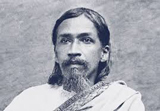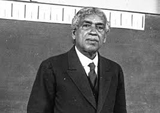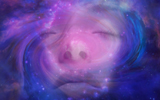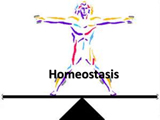Death
The metaphysical basis for Integral Health: Issues of life and death
In common parlance, ‘life’ as a phenomenal energy is associated with whatever is ‘animate’, whatever breathes and moves, whatever expresses the vibrant buoyancy of energy. Indeed it has been eulogised that ‘breath is life’. (One needs to distinguish between the physiological mechanisms of breathing and the praanna or life-force that is quintessentially considered in the yogic tradition to be the ‘breath of Life’). Sri Aurobindo however points out like a metaphysician with concomitant scientific precision that:
(a) “….the spontaneous motion or locomotion, breathing, eating are only processes of life and not life itself”;
(b) “…..processes of our vitality can be maintained in other ways than by our respiration and our means of sustenance. It is a proved fact that even human life can remain in the body and can remain in full consciousness when breathing and the beating of the heart and other conditions formerly deemed essential to it have been temporarily suspended (1)”, a feat sometimes demonstrated by hathayogis for varying time-periods; and
(c) The “response to stimulus” which is the “proof of vitality” and if positive points to life while if negative points to death; has been affirmed not only in animal-life but also in plants and in metals (2). Sri Aurobindo refers to the works of the pioneering Indian scientist, Jagadish Chandra Bose. Bose invented the crescograph to measure plant response to various stimuli and demonstrated the parallelism between animal and plant tissues. He also made a comparative study of the fatigue response of various metals and organic tissue in plants. Bose demonstrated that metals could show ‘fatigue’ like biological cells when confronted with a barrage of mechanical, thermal, chemical and electrical stimuli. His experiments showed cyclical fatigue and recovery response across multiple types of stimuli in both living cells and metals.
Sri Aurobindo takes up this cue of the presence of life-energy in plants and metals to demonstrate that the consciousness that pervades everything is basically the same with differences in forms, presentations and denouements. “But if life, however rudimentary in its symptoms, exists in the metal, it must be admitted as present, involved perhaps or elementary and elemental in the earth or other material existences akin to the metal. If we can pursue our enquiries farther, not obliged to stop short where our immediate means of investigation fail us, we may be sure from our unvarying experience of Nature that investigations thus pursued will in the end prove to us that there is no break, no rigid line of demarcation between the earth and the metal formed in it or between the metal and the plant and, pursuing the synthesis farther, that there is none either between the elements and atoms that constitute the earth or metal and the metal or earth that they constitute. Each step of this graded existence prepares the next, holds in itself what appears in that which follows it. Life is everywhere, secret or manifest, organised or elemental, involved or evolved, but universal, all-pervading, imperishable; only its forms and organisings differ (3).”
This would validate Sri Aurobindo’s own experiential concept of a consciousness that is essentially the same throughout, though variable in status, nature and poise and that these different denouements are due to the different planes that manifest along the trajectory of an evolving consciousness. Each new plane that evolves is more complex and organised than the prior planes, yet is not disconnected from them but holds them in essence. The creation that is apparently variegated in appearance is integral in essence.
While discovering similarities between his own contentions and the findings of Jagadish Chandra Bose, Sri Aurobindo is cautious not to forcefully equate the conclusions of science and metaphysics as they arise from distinctly separate knowledge-bases; however one cannot deny that certain conclusions of science corroborate certain conclusions of metaphysics. “Science cannot dictate its conclusions to metaphysics any more than metaphysics can impose its conclusions on science. Still if we accept the reasonable belief that Being and Nature in all their states have a system of correspondences expressive of a common Truth underlying them, it is permissible to suppose that truths of the physical universe can throw some light on the nature as well as the process of the Force that is active in the universe — not a complete light, for physical Science is necessarily incomplete in the range of its enquiry and has no clue to the occult movements of the Force (4).”
Life-Energy and death
Life is an energy that is not only present in what we call the living systems but also in non-living systems though in different denouements. In living systems, we can discern the presence of life through its myriad processes like breathing, locomotion and eating. In the non-living systems, life-energy is incipient in the atomic matrix, in the electronic orbits, in the molecular variety. Sceptics might scoff at the idea of life-energy in metals but the world would come to terms with this idea if electrons suddenly decide to stop rotating in their orbits!
Life-energy becomes explicit in the inter-relations between living and non-living systems that balance existence. “The fact would seem to be, then, that as there is a constant dynamic energy in movement in the universe which takes various material forms more or less subtle or gross, so in each physical body or object, plant or animal or metal, there is stored and active the same constant dynamic force; a certain interchange of these two gives us the phenomena which we associate with the idea of life. It is this action that we recognise as the action of Life-Energy and that which so energises itself is the Life-Force. Mind-Energy, Life-Energy, material Energy are different dynamisms of one World-Force (5).”
The very fact that today a subject who had been technically dead for a few moments can be revived with life-support systems shows that life-energy was potentially present though not decipherable. ”Within certain limits that which is dead can be revived; the habitual operations, the response, the circulation of active energy can be restored; and this proves what we call life was still there in the body, latent, that is to say, not active in its usual habits …(6).”
It has been a custom with health workers to designate a subject in coma to be in a ‘vegetative’ state, ostensibly implying a suspension of consciousness from where death would be the next state. It has been only as late as 2010 when the European Task Force on Disorders of Consciousness acknowledged that the term ‘vegetative’ had too many negative connotations and sought to officially substitute it by the term ‘unresponsive wakefulness syndrome’. This step was initiated after some severely brain-damaged patients showed residual cortical processing in the absence of behavioural signs of consciousness (7). This echoed what Sri Aurobindo had written a century earlier, “In certain cases, such as catalepsy, we see that the outward physical signs and operations of life are suspended, but the mentality is there self-possessed and conscious although unable to compel the usual physical responses (8).”
One interesting area is the trance state. It is an altered state of consciousness lasting a certain spell. Once the spell is over, there is a return to the pre-trance status quo. Trance states can be cultural phenomena as during religious rituals subjects neither bleed nor feel pain when they jump on a bed of thorns, walk through fire or pierce their tongues. Trance states can also reflect deep spiritual states like the experience of samādhi in Raj Yoga. Sri Aurobindo had observed, like an expert clinician, “…. in certain forms of trance, both the physical functionings and the outward mental are suspended, but afterwards resume their operation, in some cases by external stimulation, but more normally by a spontaneous return to activity from within. What has really happened is that the surface mind-force has been withdrawn into subconscious mind and the surface life-force into sub-active life and either the whole man has lapsed into the subconscious existence or else he has withdrawn his outer life into the subconscious while his inner being has been lifted into the superconscient (9).”
How does the body die?
The bodily form can die or disintegrate in three ways:
a. The bodily form has been damaged in such a way that it can no longer be a fit receptacle to hold the quantum of life-energy necessary for animating it: “…. a lesion has been inflicted on the body as makes it useless or incapable of the habitual functionings (10)”;
b. The life-energy does not get the correct milieu to maintain the homeostasis: “…the Force that should renew the life-action becomes entirely inert to the pressure of the environing forces with whose mass of stimulation it was wont to keep up a constant interchange (11).” However, during the process of disintegration [in both (a) and (b)], Life-Energy has to itself conduct the process of de-linking and disentangling its roots and points of attachment from the body — that is also a designated task: Life has to be “busy only with the process of disintegrating the formed substance so that it may escape in its elements and constitute with them new forms (12)”;
c. Death finally ensues when the Universal Will withdraws its fulcrum of support to the individual bodily form, “The Will in the universal force that held the form together, now withdraws from constitution and supports instead a process of dispersion. Not till then is there the real death of the body (13).”
Death therefore is a disintegration and dispersion of the bodily form so that the Life-Energy, so long supporting the form, gets disentangled and free to reconstitute new forms. Life-energy is therefore a dynamic phenomenon programmed for continual progress that outlasts the time-span of the material body. If the substance comprising the material body could undergo a qualitative transmutational change through an evolution in consciousness, it would support the functionings of the life-energy in progressively newer denouements, charting out newer perspectives of health and consciousness.
References
1. Sri Aurobindo. The Complete Works of Sri Aurobindo, Volume 21. Pondicherry: Sri Aurobindo Ashram Trust; 2005, p. 190.
2. Ibid., p. 191.
3. Ibid.
4. Ibid., p. 190 (footnote).
5. Ibid., p. 192.
6. Ibid.
7. Laureys S et al. Unresponsive wakefulness syndrome; a new name for the vegetative state or apallic syndrome. BMC Medicine 2010; (8): 68.
8. Sri Aurobindo. Complete Works, Volume 21. pp. 192-3.
9. Ibid., p. 193.
10. Ibid.
11. Ibid.
12. Ibid.
13. Ibid.
Share with us (Comments, contributions, opinions)
When reproducing this feature, please credit NAMAH, and give the byline. Please send us cuttings.





